Is objective mobility data associated with pharmacologic venous thromboembolism (VTE) prophylaxis use among hospitalized older adults?
Date
2018-04-10
Journal Title
Journal ISSN
Volume Title
Repository Usage Stats
views
downloads
Abstract
Background: Clinical practice guidelines state that mobility is supposed to play an important role in determining use and duration of pharmacologic VTE prophylaxis. This study examines whether measured mobility levels relate to pharmacologic VTE prophylaxis use among hospitalized older adults.
Methods: Prospective observational data from a sample of community-dwelling older adults aged ≥ 60 years, admitted to an academic hospital’s general medicine service. Inpatient mobility was objectively measured using ankle-mounted accelerometers from admission until discharge (or ≤ 7 days). Clinical and demographic factors, and pharmacologic VTE prophylaxis use was manually abstracted from the medical record. We performed descriptive statistics for daily mobility parameters (time spent in activity, sedentary time, and step counts) according to VTE risk stratification using a validated stratification tool (Padua Score) and prophylaxis use. Pearson’s correlation was used to determine the correlation of mobility measures with use and duration of VTE prophylaxis.
Results: Among hospitalized older adults in this sample (N=65), 71% (n=46) were low risk for VTE occurrence, yet 62% (n=40) received pharmacological VTE prophylaxis during an average of 57% of their hospital stay (SD 46). Median time in activity was 65 minutes/day (IQR 40, 102; Range 5 – 289 mins/day). Median time spent in sedentary activity (awake but not moving) was 15 hrs/day (IQR 12, 17; Range: 3 – 20 hrs/day). Median total daily steps was 1370 (IQR 852, 2387; Range: 86 – 6134 steps/day). There was significantly greater sedentary time (16 hrs/day) for high risk patients compared to low risk patients (13 hrs/day) (p=0.02), but no differences in activity time or step counts. There were no detectable differences in mobility measures between those receiving and not receiving pharmacological VTE prophylaxis, and no significant correlations between mobility measures and duration of VTE prophylaxis.
Conclusions: Among hospitalized older adults, use and duration of VTE prophylaxis did not differ by higher or lower mobility activity, suggesting that better mobility awareness is needed to guide appropriate pharmacological VTE prophylaxis use.
Type
Department
Description
Provenance
Subjects
Citation
Permalink
Collections
Scholars@Duke
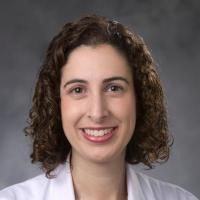
Juliessa Pavon
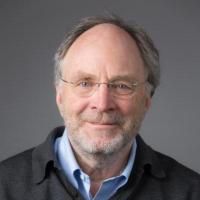
Carl F. Pieper
Analytic Interests.
1) Issues in the Design of Medical Experiments: I explore the use of reliability/generalizability models in experimental design. In addition to incorporation of reliability, I study powering longitudinal trials with multiple outcomes and substantial missing data using Mixed models.
2) Issues in the Analysis of Repeated Measures Designs & Longitudinal Data: Use of Hierarchical Linear Models (HLM) or Mixed Models in modeling trajectories of multiple variables over time (e.g., physical and cognitive functioning and Blood Pressure). My current work involves methodologies in simultaneous estimation of trajectories for multiple variables within and between domains, modeling co-occuring change.
Areas of Substantive interest: (1) Experimental design and analysis in gerontology and geriatrics, and psychiatry,
(2) Multivariate repeated measures designs,
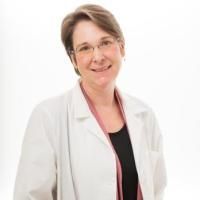
Cathleen Sellner Colon-Emeric
Current research focuses on the epidemiology, prediction, and prevention of osteoporotic fractures in elderly persons, and in improving the quality of care delivered to residents in skilled nursing facilities. Ongoing projects include a large, administrative database study of osteoporosis screening in men, a randomized trial of different staff education strategies to improve fall prevention in nursing homes, and several clinical demonstration projects.
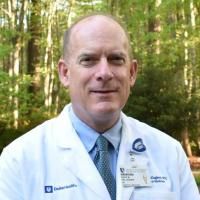
David Michael Gallagher
I am currently the Chief Medical Officer at Duke University Hospital. As CMO I am a member of the senior leadership team that positively impacts the strategies, goals, and objectives at our hospital. I also help support Duke Clinical Automated Laboratories in a clinical consultant role. I am a Professor of Medicine at Duke University. My faculty career track is as a Clinician Leader – Administrator with an emphasis on Clinical Practice Advancement. I have 25+ years of physician leadership experience with previous roles as Chief of Duke Hospital Medicine Programs and Associate CMO of Duke University Hospital. As a clinically active hospitalist, I actively teach learners as an attending physician for Duke Hospital General Medicine Teaching Services caring for patients at DUH and other venues. I am board certified by the American Board of Internal Medicine with a Focused Practice in Hospital Medicine, current in that board’s Maintenance of Certification Program, and have achieved the designation and recognition as a Senior Fellow in Hospital Medicine through the Society of Hospital Medicine. The themes of my scholarly output include readmissions reduction, venous thromboembolism risk in hospitalized older adults, physical activity in hospitalized older adults, mentorship programs for hospitalists, quality improvement teaching to residents, and hospitalist workflow improvements.
My Twitter handle is @DGallagherMD

Harvey Jay Cohen
Dr. Cohen's research program includes clinical research relating to aspects of the pathways to functional decline and reilience with aging, geriatric assessment, and cancer and anemia in the elderly.
Pathways to functional decline are being explored through the NIA funded Claude Pepper Older Americans Independence Center, and includes studies of the contributions of age related physiologic change, in particular changes in inflammatory parameters, comorbid diseases and conditions, environment, genetics, and the interactionas among them. Data are derived from several current studies as well as previously collected data sets from the Established Populations for Epidemiologic Studies of the Elderly (EPESE), National Long Term Care Survey, and the Chinese Longevity Study (with Dr. Zeng Yi). Previous work has demonstrated the important contributions of age related inflammation and coagulation activation to functional status. He is Co-PI of the Pepper Center Physical Performance Across the LifeSpan (PALS) study, which is a longitudinal cohort study of community dwelling adults from age 30-90+and includes functional measures and biomarkers on inflammation and metabolism.
Geriatric assessment approaches have been studied in a number of randomized and controlled studies and work is now concentrating on the application of Comprehensive Geriatric Assessment tools to the evaluation and treatment of elderly patients with cancer. This is an extension and continuation of a long standing interest in geriatric oncology. Previous studies have elucidated age-related patterns of disease presentation, treatment approaches, clinical trials, survivorship, quality of life, impact of comrobidities and functional outcomes. Dr. Cohen was co-chair, and now member of the Cancer in the Older Adult Committee of the Alliance for Clinical Trials in Oncology (ALLIANCE). A number of active studies and ongoing data bases aree being utilized to address these questions.
Anemia in the older adult is being addressed through an NIA funded U01 consortium (Dr. Cohen Co-PI). the current main study is an observational study followed by a pragmatic treatment trial for anemia in older adults with CHF, in collaboration with the Cardiovascular Research Network (CVRN) of the Health services research network (HSRN)
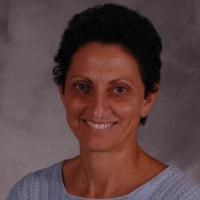
Miriam C. Morey
The general focus of Dr. Morey's work is exercise and aging. All of her research examines how physical activity, exercise training, or physical fitness influence the physical functioning and/or pyschosocial quality of life of older adults. She directs a supervised hospital-based program for older adults, which is used to examine longitudinally the effects of exercise training on the musculoskeletal, articular, and cardiorespiratory systems. Furthermore, she has a number of studies that examine how system-wide impairments serve as preclinical indicators of disability and overall decline in the quality of life of older adults. Ongoing studies examine the role of exercise training in attenuation or reversal of functional decline and examination of the effectivenes of different methods of physical activity counseling for home-based exercise.
Dr. Morey's research evolves directly from three sources: (1) primary analyses of clinical trials regarding the impact of exercise on a specific outcome, (2) longitudinal analyses of participants in ongoing clinical exercise programs, and (3) secondary analyses of clinical trials which involve exercise or physical activity.
Although physical activity and exercise are the interventions of interest in all of these studies, the outcomes of interest vary considerably. Within the broad domain of aging, Dr. Morey has examined the impact of exercise on physical performance, well-being, sleep quality, disability, and functional limitations. More recently, Dr. Morey has several studies focusing on the effect of tailored telephone physical activity counseling to improve function in elders. Specific studies are targeted to newly diagnosed cancer survivors, long-term cancer survivors, and frail elders in geriatric and primary care settings.
Dr. Morey's expertise is in the area of exercise physiology and aging. She has specific knowledge in age-related changes in cardiorespiratory functioning, the effects of habitual exercise (longitudinal) on performance, and exercise programming for older adults.
Key Words: Exercise, maximal oxygen uptake, cardiorespiratory fitness, aging, disability,
functional limitations, longitudinal

Susan Nicole Hastings
Material is made available in this collection at the direction of authors according to their understanding of their rights in that material. You may download and use these materials in any manner not prohibited by copyright or other applicable law.